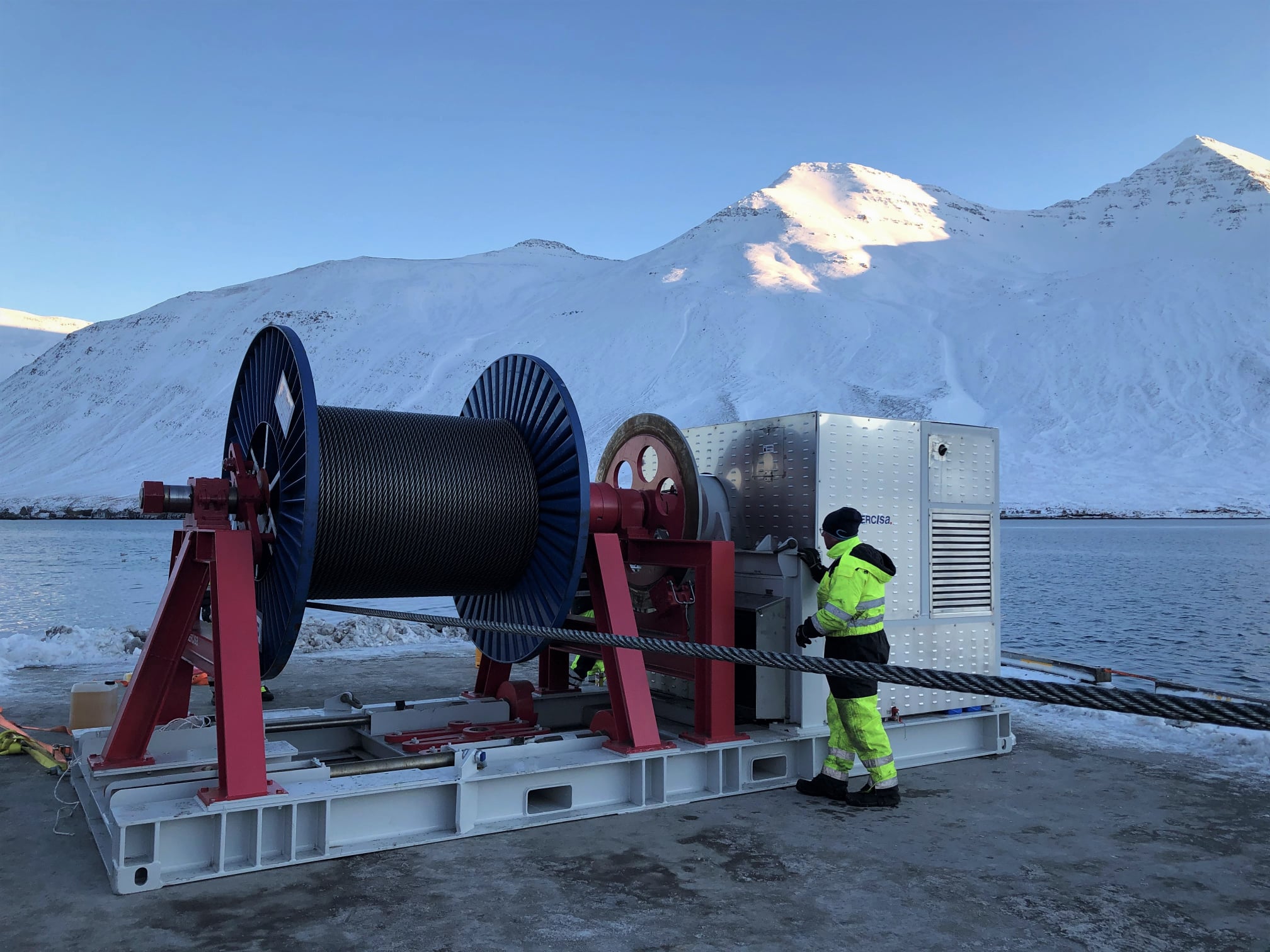



See
our
credentials
our
credentials
Press releases
21/12/2020
New portable spooling winch for ISFELL designed by Ibercisa
The Icelandic company ISFELL chose Ibercisa Deck machinery to develop a new cable spooling winch, designed to be transported as a 20’ container, which is also totally autonomous.
Perfect onboard cable spooling is key to perfect performance and cable maintenance. This is a well-known fact for net, cable and other fishing gear suppliers, such as the Icelandic Company ISFELL, which has trusted Ibercisa to design and manufacture its new cable spooling winch. The idea behind this is for ISFELL to be able to supply cable which is already stored in optimum conditions so as to ensure that it works perfectly from day one.
With this new Ibercisa spooling/tensioning winch, ISFELL is able to supply cable to the winch with the correct tension and speed. The machine is able to accommodate most common sized coils of cable available on the market with kits included with the winch itself. Adaptation of the coil in transport is no longer a problem. Nor is it a problem to carry out operations in situations where electricity supply is either unavailable or entails complicated bureaucracy, as the machine incorporates a diesel motor which gives the hydraulic system the energy it needs to operate.
The winch, with a power of 44.82 kW, was conceived and designed with mobility in mind. Isfell has opted for diesel drive, enough for this type of machine which is designed for mobile use in ports or outdoors, away from stable electricity supplies. The base of the winch fits into a commercial sea container which makes it easy to transport on a lorry. The fact that all the spool adapting tools are in the winch itself allows for use in different ports or factories.
The winch is driven by a closed circuit diesel/hydraulic system compactly mounted on the base of the machine. The system allows two operational modes: One with constant tension against the hydraulic motor for spooling the first layers, guaranteeing correct tension and spooling at slow speeds; and a second mode against the brake, optimized for spooling at greater speed whilst maintaining the appropriate tension on the highest layers. The winch operates at a speed of 9,8 rpm.
The remote control gives better operational visibility, as well as a register of alarm data, speeds, etc. Lastly, blinds have been installed to enable better access to the controls and equipment maintenance, as well as toolboxes and fixtures adapted to the base of the machine itself. All of this gives a compact and practical package.
RELATED MEDIA
Ibercisa News:
PRESS CONTACT
Nieves García
press@ibercisa.es
press@ibercisa.es
IBERCISA ON TWITTER
Tweets por el @Ibercisa.

